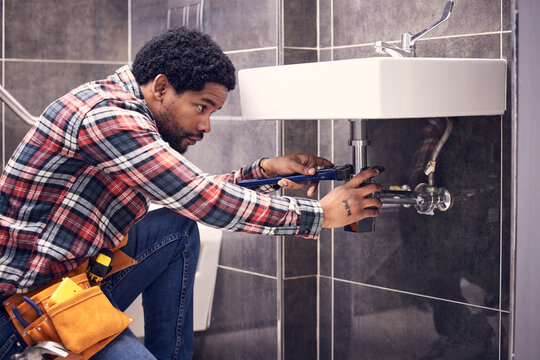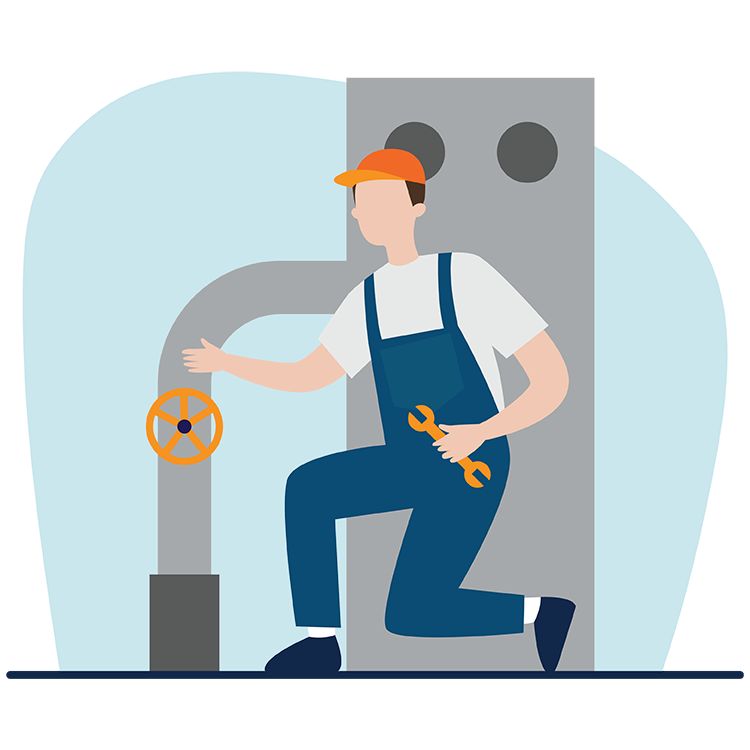Necessary Plumbing Alabaster AL Tips for Homeowners
Necessary Plumbing Alabaster AL Tips for Homeowners
Blog Article
A Detailed Guide to Efficient Hot Water Heater Setup for Ideal Performance
Starting the job of installing a water heater is an endeavor that demands accuracy and a methodical technique for accomplishing optimal performance. The procedure begins with the critical decision of selecting the appropriate heater tailored to the particular demands of your household, taking into consideration aspects such as energy, dimension, and type resource. Once chosen, preparing the installation area to meet safety criteria is paramount. The journey does not finish here. As you continue, the details of connecting water lines and establishing reliable electric or gas connections await, encouraging understandings into making certain efficiency and integrity.
Choosing the Right Water Heating System

Next, consider the dimension and ability of the hot water heater. It's vital to evaluate your house's warm water requirements, which can differ based on the variety of occupants and their usage patterns. A system that's too little might result in inadequate warm water, while a large design might cause unneeded power intake.
Efficiency ratings additionally play a critical function in choice. Try to find water heaters with high Power Aspect (EF) rankings, showing exceptional performance and lowered energy use. Tankless designs, though usually extra expensive upfront, deal substantial energy financial savings with time as a result of their on-demand heating capabilities.
Preparing the Installation Location
Prior to setting up a new water heating unit, thorough prep work of the installation area is important. It's vital to measure the area very carefully to accommodate the water heating system's measurements, making certain adequate clearance around the unit for efficient procedure and maintenance.
Inspect the floor for security, as the water heater will require a strong, degree surface to operate efficiently. If required, install a drip frying pan under the unit to catch potential leakages or spills, preventing water damage to the surrounding area.
In addition, ensure that all required tools and materials get on hand before commencing the installation. This consists of things such as wrenches, screwdrivers, a degree, and any type of added hardware required for protecting the heater and placing. A well-prepared installation area sets the foundation for a successful hot water heater setup, maximizing efficiency and security.
Connecting Supply Of Water Lines
When connecting water system lines to your newly mounted water heater, it is vital to ensure that all connections are safe and secure and leak-free to maintain efficient operation and stop water damages. Begin by recognizing the cold and warm water lines. The cool water inlet is normally noted with a blue tag or a "C", while the hot water electrical outlet is marked with a red label or an "H".
Usage versatile water heating unit ports to assist in a simpler installment procedure. Before connecting the connectors, position a plumbing's tape around the threaded ends of the water heater's inlet and outlet pipes.
When links remain in place, gradually switch on the primary water supply valve. Inspect each connection for leakages by aesthetically examining and feeling for wetness. Tighten up connections as essential, and make certain the stress relief shutoff this is correctly set up, protecting versus extreme pressure accumulation.
Establishing Electric or Gas Connections
Correctly establishing up the electrical or gas connections for your water heating system is an important action to make sure efficient and safe procedure. For electrical water heating units, begin by validating that the electric circuit is suitable with the heating unit's voltage and amperage requirements.
For gas water heating systems, security is vital. Connect the gas line to the water heating system using an adaptable gas adapter, guaranteeing it is effectively threaded and sealed with pipe joint compound or Teflon tape ideal for gas connections.
Once links are made, examine for any type of possible leakages. For gas lines, apply a soapy water remedy to the joints; bubbles indicate a leak. For electrical links, verify that all circuitry is secure and properly insulated, preserving conformity with regional electric codes.
Examining and Readjusting for Effectiveness
With the electric and gas connections safely in place, the next step is evaluating the operational efficiency of your water heating unit. Begin by very carefully activating the water system and making certain there are no leakages at any of the shutoffs or joints. As soon as verified, proceed to fill the container, taking note of the pressure and temperature level settings. It is advisable to set the thermostat to an advised temperature of around 120 ° F(49 ° C) to balance power performance and comfort.
Next, perform an extensive evaluation to make certain the heating aspects or burner are operating correctly. For electrical heaters, use a multimeter to verify if the components are attracting the appropriate existing. In gas models, observe the heater fire; it should be consistent and blue, indicating reliable combustion.
Change the setups as necessary to get rid of inefficiencies. Think about applying insulation procedures, such as adding a water More Bonuses heating unit covering, to better boost performance by reducing warmth loss. Additionally, examine the their website anode pole's condition, as a worn-out pole can lower effectiveness and result in container corrosion.
Conclusion
Reliable water heater installment is crucial for ensuring ideal performance and energy financial savings. Securely connecting water supply lines and meticulously setting up electric or gas connections minimize potential concerns.

Correctly establishing up the electrical or gas links for your water heating system is a critical action to make sure reliable and secure procedure. For electrical water heating systems, begin by validating that the electrical circuit is compatible with the heating unit's voltage and amperage demands. Link the gas line to the water heating system using a versatile gas adapter, ensuring it is correctly threaded and sealed with pipeline joint substance or Teflon tape appropriate for gas connections.
Report this page